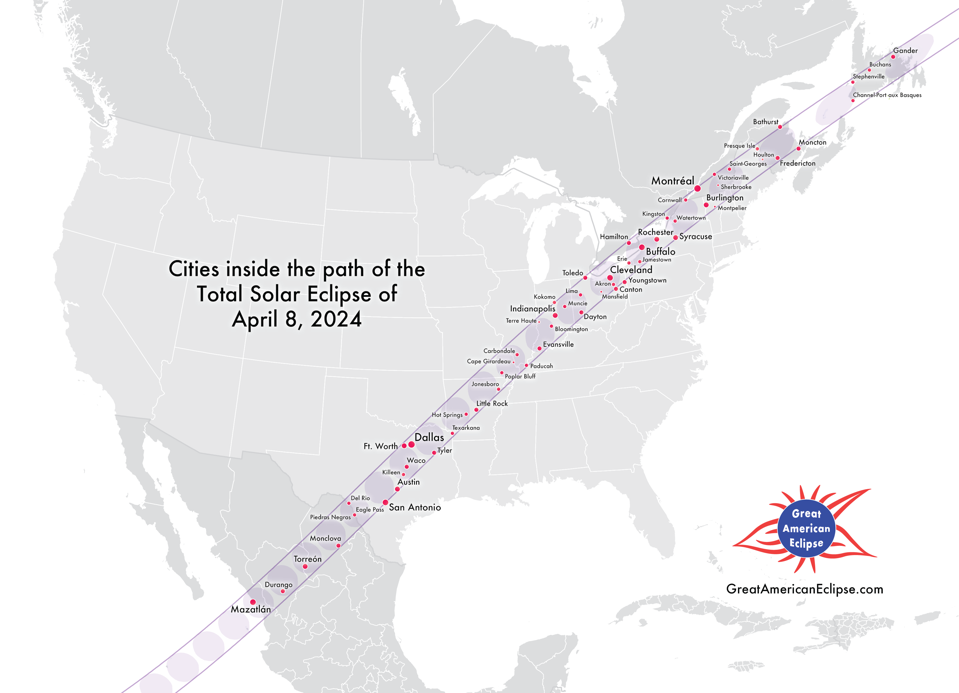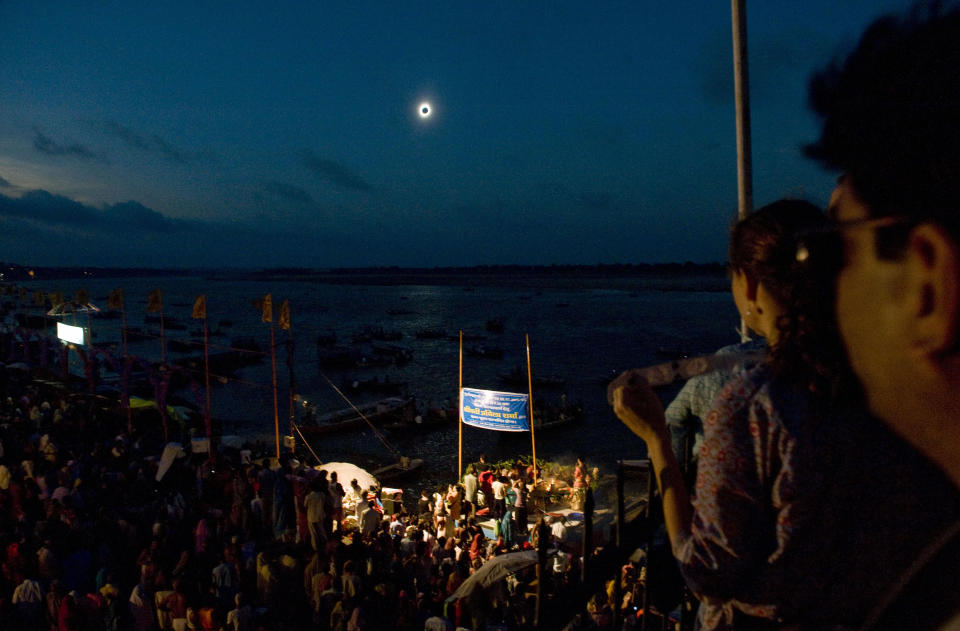Will the total solar eclipse on April 8 be the most watched ever?

The total solar eclipse on April 8 will be viewed by an awful lot of people: 43.8 million people live in the path of totality, and that number doesn't include those traveling to the path to witness the spectacular event. The path of the last total solar eclipse, on April 20, 2023, by contrast, was home to just 389,000 people.
Whether it will be the most-watched eclipse ever, as the BBC claims, however, is harder to prove. It may well be, at least in some ways. But even if it is, that title will certainly not last beyond 1,211 days, when the April 8, 2024 eclipse will be spectacularly outshone by the "eclipse of the century."
That said, the "Great North American Eclipse" on April 8 is still a huge stroke of luck. Our planet is so dominated by water that, during most total solar eclipses, the path of totality barely touches land. This one will surge through parts of six Mexican states, 15 U.S. states and six Canadian provinces.
Related: Total solar eclipse 2024 maps of the 'path of totality'
If you can't watch the eclipse in person you can watch the total solar eclipse live here on Space.com. And keep up with all the actions with our total solar eclipse 2024 live updates blog.
April 8 eclipse cities

It's rare for a big city to be inside a path of totality. Yet on April 8, as many as 7.6 million people in the Dallas-Fort Worth metro region alone will experience brief darkness in the day and a chance to see the sun's majestic corona with the naked eye. In fact, about 10 million people who experience totality will do so from just 10 cities, including Austin, San Antonio, Dallas, Indianapolis, Cleveland and Montreal. For North Americans, there's arguably never been a more populated and accessible path of totality.
Great Asian Eclipse

So will the April 8 eclipse go down as the most urban total solar eclipse ever? Actually, no. On July 22, 2009, the longest total solar eclipse of the 21st century cast a shadow over Asia, plunging hundreds of millions into darkness in India and China. A whopping 421 million people lived in that path of totality, making it easily the most populated path of totality this century — and potentially in all of human history.
Those in Varanasi, India, had a beautifully clear view of an eclipsed sun just after sunrise before the moon's shadow moved across northern India to central China, including Chengdu, Wuhan and Shanghai, the latter then home to about 20 million people. The weather in China was terrible that day. A few cruise ships glimpsed totality, but almost everyone on land failed to see the corona. It got dark in the day, but does that count? Sure, but it's not ideal.
Related: What happens if it's cloudy for the April 8 solar eclipse?
Great North African Eclipse

For good odds of clear skies for totality, there will perhaps be no better time than the total solar eclipse on Aug. 2, 2027. During that event, a 160-mile-wide (258 kilometers) path of totality will sweep across southern Spain, Morocco, Algeria, Tunisia, Egypt, Saudi Arabia, Yemen and Somalia. Clouds are virtually unheard of within most of the path in August but dust will be a far greater issue.
In addition to presenting a much greater opportunity for clear skies, the Aug. 2, 2027 eclipse will be seen by more people than the April 8, 2024 event: About 89 million people will experience totality that day — more than double the number for the imminent Great North American Eclipse.
Six-minute totality

There's another way the Great North African eclipse in 2027 will trump the upcoming one on April 8: Totality will last longer. Totality on Aug. 2, 2027, will last a whopping 6 minutes, 23 seconds, compared with up to 4 minutes, 28 seconds for the April 8 eclipse. That's not a coincidence; the Aug. 2, 2027 eclipse belongs to the same once-every-18-year family of repeating moon shadows as the 2009 eclipse.
So, if there's one total solar eclipse to travel to after April 8, it's this one. It maximizes in duration as it crosses Luxor, Egypt. Home to fabulous sights such as Karnak, the Valley of the Kings, the Colossi of Memnon and the Mortuary Temple of Hatshepsut — as well as the Nile — this is the world's most spectacular living museum.
Path of totality in 2027
The path of totality for the total solar eclipse on Aug. 27, 2027, will be more than 9,000 miles (14,400 km) long. In addition to Luxor, these are some viewing locations to consider:
Cadiz, Marbella and Malaga, Spain
Gibraltar, on the southern tip of the Iberian Peninsula
Tangier, Morocco
Oran, Algeria
Kerkennah Islands, Tunisia
Jeddah and Mecca, Saudi Arabia
Coming exactly 1,211 days after the Great North American Eclipse, the total solar eclipse in 2027 will provide the longest possible totality in this era. If you ever wanted to chase another eclipse, this is the one to choose.
